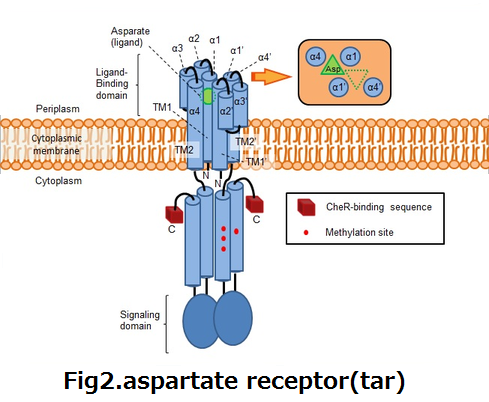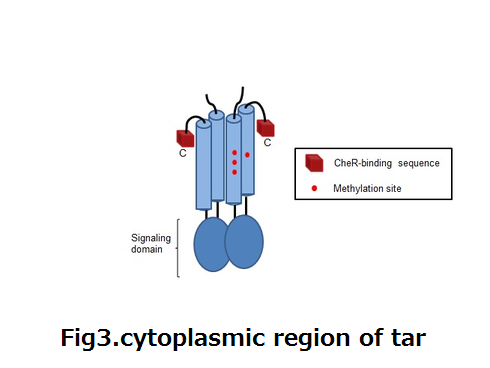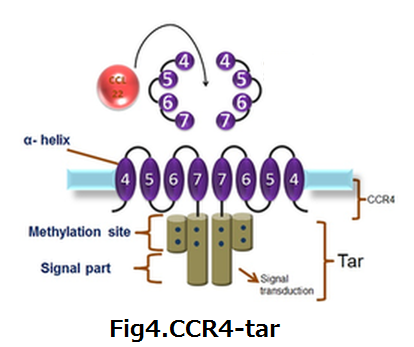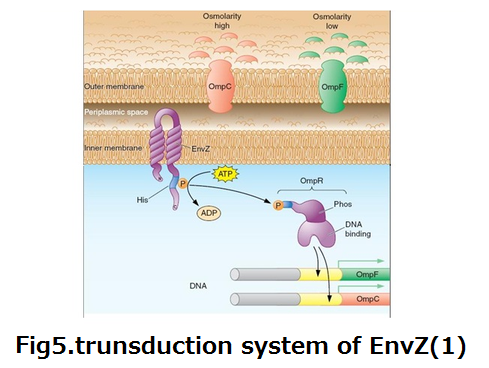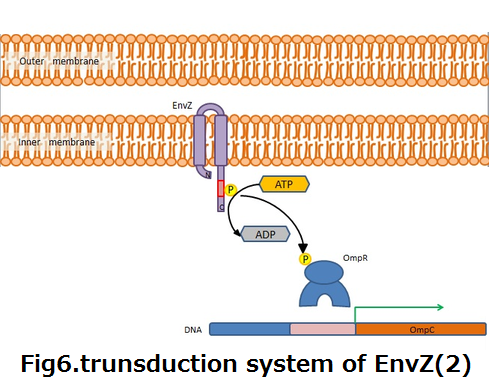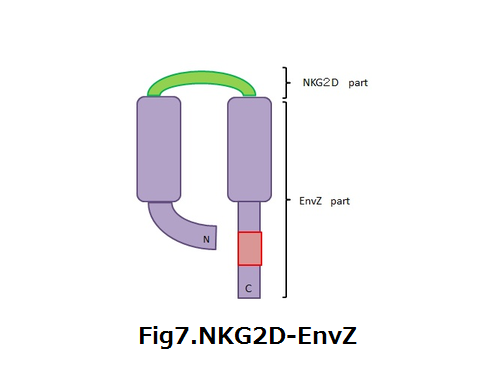Team:KAIT Japan/Project
From 2012.igem.org
(Difference between revisions)
| (6 intermediate revisions not shown) | |||
| Line 68: | Line 68: | ||
:However cancer cells attract regulatory T cells to avoid lymphocytes attacking.Regulatory T cells have receptor called CCR4 which accept chemokine 22(CCL22) which was secreted by cancer cells. | :However cancer cells attract regulatory T cells to avoid lymphocytes attacking.Regulatory T cells have receptor called CCR4 which accept chemokine 22(CCL22) which was secreted by cancer cells. | ||
:When CCR4 combine with CCL22, regulatory T cells move to cancer cells. and attracted regulatory T cells inactivate helper T cells and killer T cells. | :When CCR4 combine with CCL22, regulatory T cells move to cancer cells. and attracted regulatory T cells inactivate helper T cells and killer T cells. | ||
| - | :Such a mechanism make lose the capital components of immune response towards tumor compromise.( | + | :Such a mechanism make lose the capital components of immune response towards tumor compromise.(Fig1) |
:Natural killer cell is a kind of immune cells participating in an immune system. NK cells have some receptor on the membrane surface, and one of those is the membrane protein called NKG2D. NKG2D can receive stress protein which is called MICA. MICA express the membrane of cancer cells. | :Natural killer cell is a kind of immune cells participating in an immune system. NK cells have some receptor on the membrane surface, and one of those is the membrane protein called NKG2D. NKG2D can receive stress protein which is called MICA. MICA express the membrane of cancer cells. | ||
| - | + | ||
:NKG2D is a receptor of MICA which is a stress protein. MICA exist on the surface of the membrane cancer cells. | :NKG2D is a receptor of MICA which is a stress protein. MICA exist on the surface of the membrane cancer cells. | ||
:We thought that E.coli could be combined with a cancer cell by recombinant NKG2D in E.coli. | :We thought that E.coli could be combined with a cancer cell by recombinant NKG2D in E.coli. | ||
| Line 80: | Line 80: | ||
:'''3-1,Chemotaxis to CCL22''' | :'''3-1,Chemotaxis to CCL22''' | ||
::The signal transduction mechanism of prokaryote and eukaryote about chemotaxis is radically different. | ::The signal transduction mechanism of prokaryote and eukaryote about chemotaxis is radically different. | ||
| - | ::CCR4 is G protein?coupled receptor (GPCR) from human. E.coli don’t have chemotaxis to CCL22 even though we make E.coli express CCR4 because of diffrent of signal transduction. So, we focus on aspartate receptor (Tar). Tar is chemotaxis receptor of E.coli. which cause chemotaxis to aspartic acid. We design the part which consist of transmembrane (Helical1~7) of CCR4 and cytoplasmic of tar. We call this part CCR4-Tar. When this part combine CCL22, E.coli go to cancer cells.( | + | ::CCR4 is G protein?coupled receptor (GPCR) from human. E.coli don’t have chemotaxis to CCL22 even though we make E.coli express CCR4 because of diffrent of signal transduction. So, we focus on aspartate receptor (Tar). Tar is chemotaxis receptor of E.coli. which cause chemotaxis to aspartic acid. We design the part which consist of transmembrane (Helical1~7) of CCR4 and cytoplasmic of tar. We call this part CCR4-Tar. When this part combine CCL22, E.coli go to cancer cells.(Fig2,3,4) |
| - | <p>[[file:KAIT_JAPAN-Project-emvz-04.png|left|366px]] | + | ::<p>[[file:KAIT_JAPAN-Project-emvz-04.png|left|366px]] |
| - | [[file:KAIT_JAPAN-Project-emvz-05.png|center| | + | [[file:KAIT_JAPAN-Project-emvz-05.png|center|367px]]</p> |
| - | + | ||
| Line 98: | Line 97: | ||
::For that reason NK cell can’t destroy effectively cancer. | ::For that reason NK cell can’t destroy effectively cancer. | ||
| - | |||
| - | |||
| - | |||
| - | |||
| - | |||
| - | |||
| - | |||
| - | |||
| - | |||
| - | |||
:'''3-3 When MICA is recepted by NKG2D , How E.coli product Azurin?''' | :'''3-3 When MICA is recepted by NKG2D , How E.coli product Azurin?''' | ||
| - | :: | + | ::Membrane protein EnvZ cascade, E.coli has it orijinall, as a osmolality sensor was used for the system what product Azurin by a signal for NKG2D. |
| - | ::EnvZ perceive osmolality shift, and control expression of membrane protein OmpF and OmpC on the gene level.( | + | ::EnvZ perceive osmolality shift, and control expression of membrane protein OmpF and OmpC on the gene level.(Fig5,6) |
| - | ::Histidine which intracellular part of EnvZ is phosphorylated by ATP when the factor of osmolality shift is receptived to EnvZ. Then OmpR that is activator enhance OmpC. | + | ::Histidine which intracellular part of EnvZ is phosphorylated by ATP when the factor of osmolality shift is receptived to EnvZ. Then OmpR that is activator enhance OmpC. |
| - | + | ||
::We applied the cascade to produce Azurin. | ::We applied the cascade to produce Azurin. | ||
| - | ::We designed that azurin is produced by converting OmpC part to gene of azurin when MICA bond with NKG2D-EnvZ. | + | ::We designed that azurin is produced by converting OmpC part to gene of azurin when MICA bond with NKG2D-EnvZ(Fig7). |
| - | + | ||
| - | <p>[[file:KAIT_JAPAN-Project-emvz-01.png|left|366px]] | + | ::<p>[[file:KAIT_JAPAN-Project-emvz-01.png|left|366px]] |
[[file:KAIT_JAPAN-Project-emvz-02.png|center|366px]]</p> | [[file:KAIT_JAPAN-Project-emvz-02.png|center|366px]]</p> | ||
| - | |||
| - | |||
| - | |||
[[file:KAIT_JAPAN-Project-emvz-03.png|right|366px]] | [[file:KAIT_JAPAN-Project-emvz-03.png|right|366px]] | ||
| - | |||
| - | |||
:'''3-4 The system of destroying cancer by Azurin''' | :'''3-4 The system of destroying cancer by Azurin''' | ||
| Line 134: | Line 116: | ||
::This protein forms a complex p53 that is transcription activation factor relate apoptosis, and suppress degradation of p53. | ::This protein forms a complex p53 that is transcription activation factor relate apoptosis, and suppress degradation of p53. | ||
::The reaction induce DNA fragmentation. | ::The reaction induce DNA fragmentation. | ||
| - | |||
| - | |||
| - | |||
| - | |||
| - | |||
| - | |||
| - | |||
| - | |||
| - | |||
| - | |||
| - | |||
| - | |||
Latest revision as of 07:43, 25 October 2012
|
|
|
|
|
|
|
|
|
|
E.coli which kill cancer cells.http://partsregistry.org/wiki/images/1/1d/Biosafety_Level1.png Biosafety Level 1
|
 "
"













